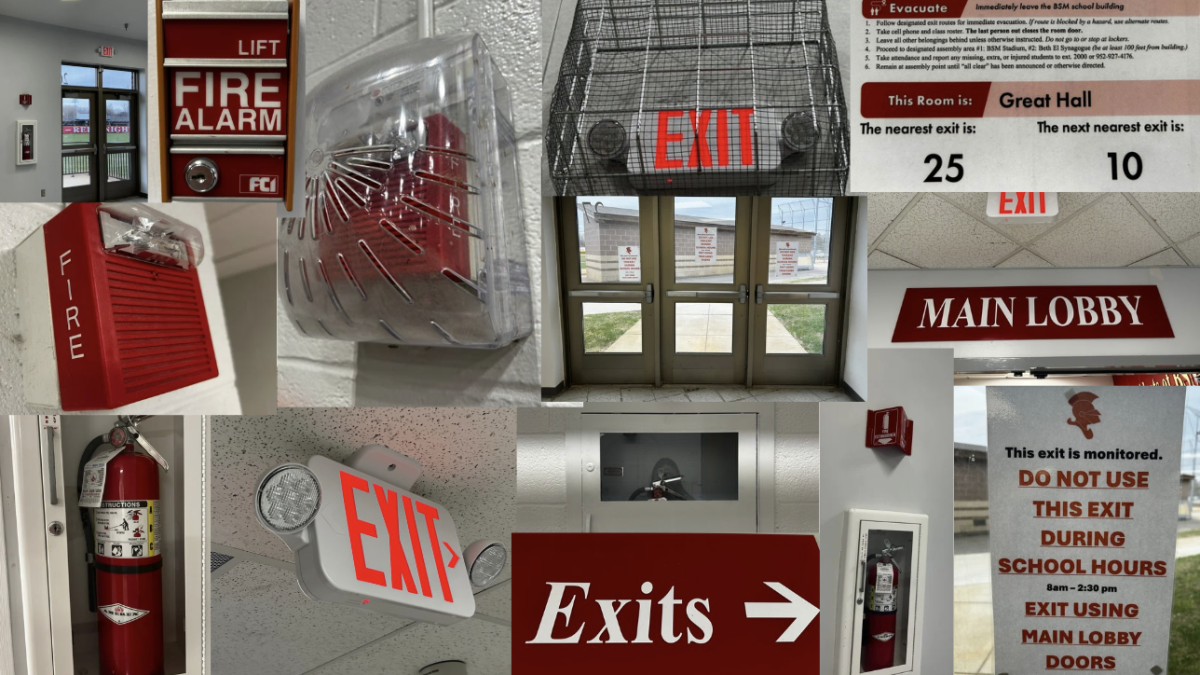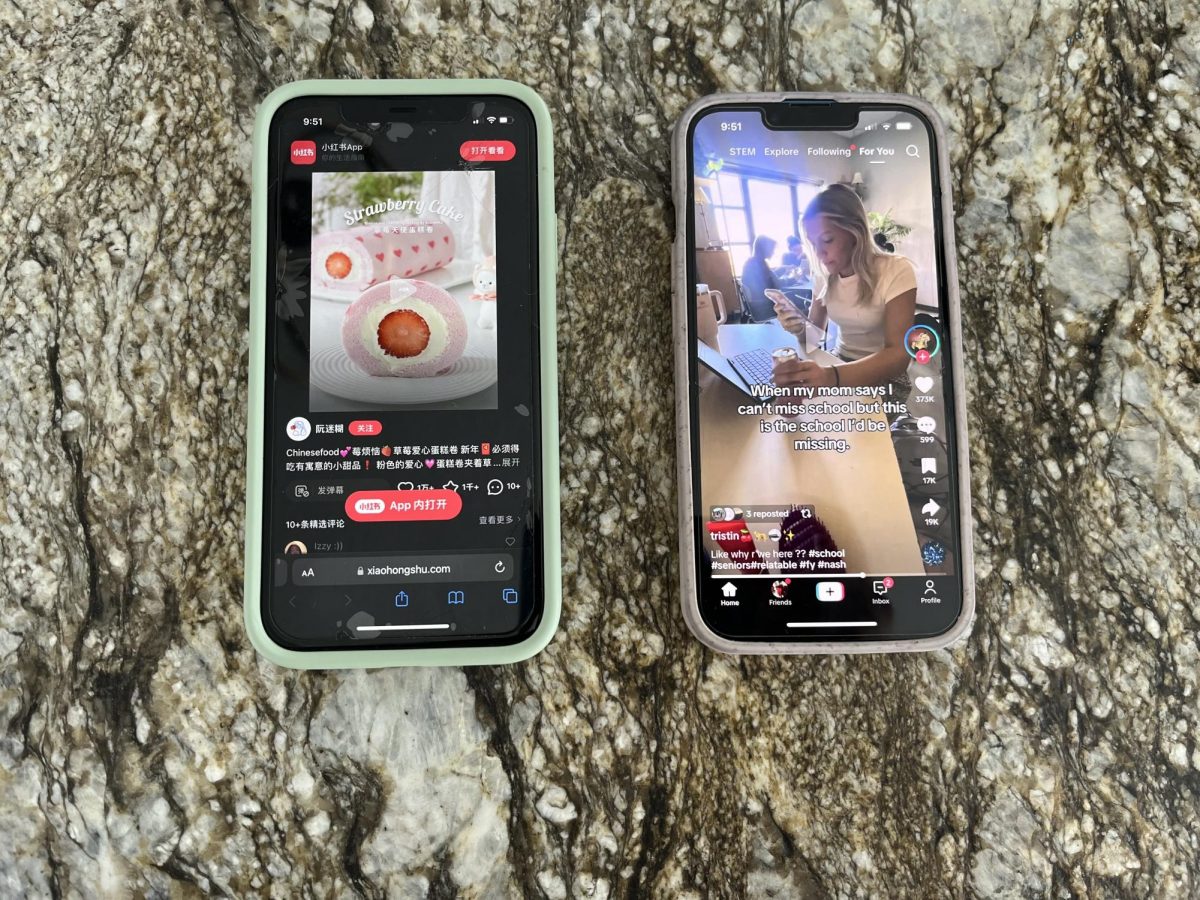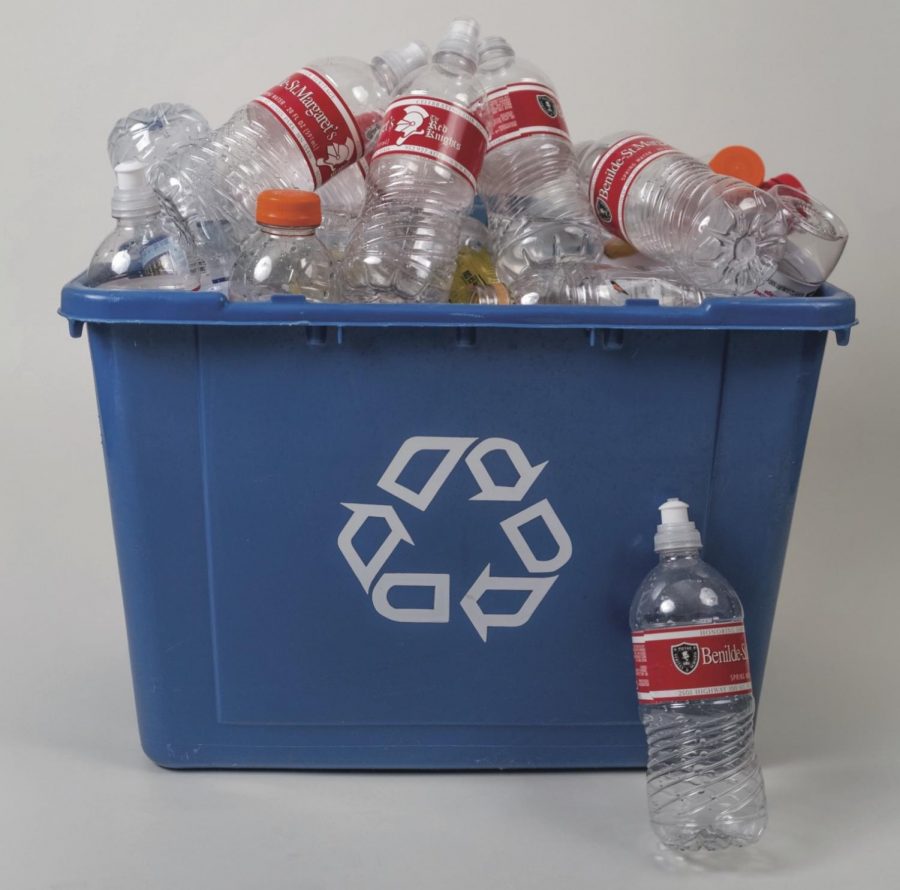A call for sustainability at BSM
Part 1 of 2 in reporting on BSM’s sustainability efforts.
BSM’s new Sustainability Club calls students to do their part to save the planet.
As the climate deteriorates, the call for sustainability is being sounded louder than ever. Increased frequency and longevity of natural disasters, uptick in disease, unpredictable weather patterns, depletion of water sources, and a surge in hunger are all imminent effects of climate change. To combat these deadly effects, BSM students are called to take a look at their lifestyle and begin implementing small sustainable changes.
BSM choir teacher Ryan Werdon researched the horrific effects of climate change and initiated a sustainability movement at BSM this year. By educating students on the dire climate situation, Werdon hopes to inspire them to focus on the benefits of sustainable living. His goal is helping students discover simple changes they can make to their lifestyle that have a tremendous impact on the environment. “I think it encompasses the mission of the school… to look at all the impacts that our school has in every way. I wanted to be a spark to have progress toward initiatives both student lead and staff/teacher lead,” Werdon said.
In order to fully be sustainable, everyone in the school community needs to be on board, including students. Werdon’s newly formed Sustainability Club helps students take action for themselves; he hopes that his project will eventually be transformed into a student-run program. Kira Berglund, a Hennepin County worker who focuses on recycling in schools, says the most successful sustainability programs involve student-run education. “Education is really important, especially when students can train other students….any education that other students would respond to is awesome,” Berglund said.
Sustainability covers a vast array of environmental practices; with this project, Werdon is honing in on improving BSM’s waste stream. He hopes to show students the impact their waste has on other people’s lives. As soon as a piece of waste is thrown in the garbage, the burden of the waste is placed on someone else’s shoulders. Landfills and incineration centers have to deal with how to dispose of the waste, and sorting facilities have to decide which pieces of waste to take and which to leave behind. Werdon emphasized the importance of education to avoid contamination in BSMs’s recycling and compost sorting bins. “There are a lot of issues with the waste stream in general, not just specific to our school, with general lack of knowledge,” Werdon said.
Wish-cycling is the practice of throwing a piece of trash in the recycling without knowing its recyclability. When a piece of trash contaminates the recycling bin, other recyclable items are polluted and end up in the landfill. To avoid further wish-cycling at BSM, Werdon played a video made by the Sustainability club about sorting waste into trash, recycling, and compost in homerooms. “Think before you toss. Take ten seconds a day to properly sort your waste, and do your part to help BSM in stewardship, sustainability, and responsibility,” the video said.
To combat wish cycling, Saint Louis Park waste specialist Emily Barker distributes pamphlets educating students and teachers about the importance of disposing of waste correctly. Barker recommends that BSM institutes a similar plan. A key part of educating students on wish cycling is continuity; the project has to outlive a graduating class of seniors so incoming students can stay engaged and interested in recycling and composting. “Having that student buy-in is really important,” Barker said.
Saint Louis Park schools also utilize technology and social media to spread awareness about wish cycling. Posting a few key reminders on social media is an easy way for thousands of students, parents, staff, and alumni to put sustainability at the forefront of their minds. “ We put stuff on social media for different messages; we have e-newsletters,” Barker said.
Recycling is a key component to operating a sustainable school. Recycling has countless benefits for the environment; recycling paper alone can save trees and water, two valuable natural resources. It is estimated that 1 billion trees worth of paper is thrown away each year. Along with providing homes to creatures, purifying the air, and providing drinking water, trees also take in carbon dioxide, a greenhouse gas that heats the atmosphere. When greenhouse gasses are released, they trap heat in the atmosphere. Trees are helpful because they trap this harmful gas and stop it from heating the environment. Other recyclable items like paper, cans, certain plastics, cups, and other items can be made into new products. “It really comes down to using resources and making sure we are able to use things again… we are saving a lot of energy and water, it takes much less water to make paper from recyclables than from trees,” Berglund said.
Composting is another vital element in eliminating waste. The food in the landfill is compressed until flat; this process releases a powerful greenhouse gas called methane into the atmosphere. When released, methane absorbs the sun’s heat and warms the atmosphere. However, when food is composted instead of thrown away, the food releases carbon dioxide back into the soil, creating fertilizer for budding plants and a remarkable habitat for worms. At BSM, Taher uses compostable Tupperware and napkins, and all food is compostable. “All our containers [are compostable],” Lynn Lynch, cafeteria manager, said.
Throwing food in the trash when it could be composted harms the earth when it could be helped. “If we are sending our food waste to a landfill, it’s creating methane, which traps heat even better than carbon dioxide. This connects to a larger issue, recycling and composting can also help us meet our goals on combating climate change,” Berglund said.
Sustainability does not always have to be a chore. To spark interest in sustainability, Berglund suggests BSM try out competitions. Grade by grade level competitions of “who has the least amount of waste” or “who can recycle the most accurately” spark a competitive side that pushes students to go sustainable. Barker recommends that BSM implement “Wasteless Wednesdays” or other themed days that encourage students and staff to cut down waste. Even just going sustainable one day a week cuts down on the school’s waste-production. “If [BSM] were to switch to reusable lunches one day a week, that would help cut down by 20 percent,” Barker said.
Outside of a school environment, clothes and textiles have a vast impact on the environment. As fast fashion increases in popularity, stores are selling cheaply made clothing for less than ten dollars. These clothes are made of synthesized textiles that cannot be recycled- these clothes cannot be taken to thrift stores as their quality deteriorates after only a few wears. The clothes often end up burned in countries across the sea, affecting climates and communities in Africa and East Europe. Students should consider shopping from eco-friendly small businesses, brands with well-made clothing that could be easily resold, and shopping second hand at thrift stores. “In terms of big environmental impacts, really think about where your clothing is coming from. Shop second hand if you can,” Barker said.
Bringing a reusable water bottle, thinking twice before recycling a plastic item, disposing of food in the compost bin, and buying clothes from eco-friendly sources do not require a radical lifestyle change, but they can have a radical impact on the environment. United as a school, BSM can adopt these small changes to combat climate change and help the world become a healthier place to live for generations to come. “There are measures that we can all take without having to drastically change our lifestyle that together, collectively as a school, can make a huge difference,” Werdon said.




































![Teacher Lore: Mr. Hillman [Podcast]](https://bsmknighterrant.org/wp-content/uploads/2025/03/teacherlorelogo-1200x685.png)






